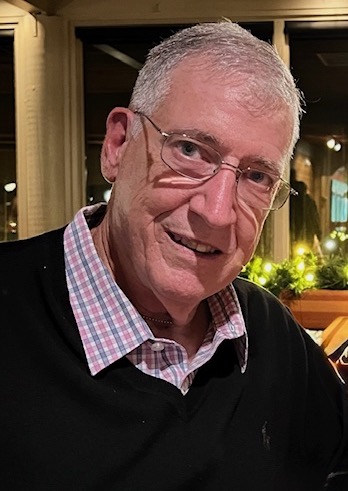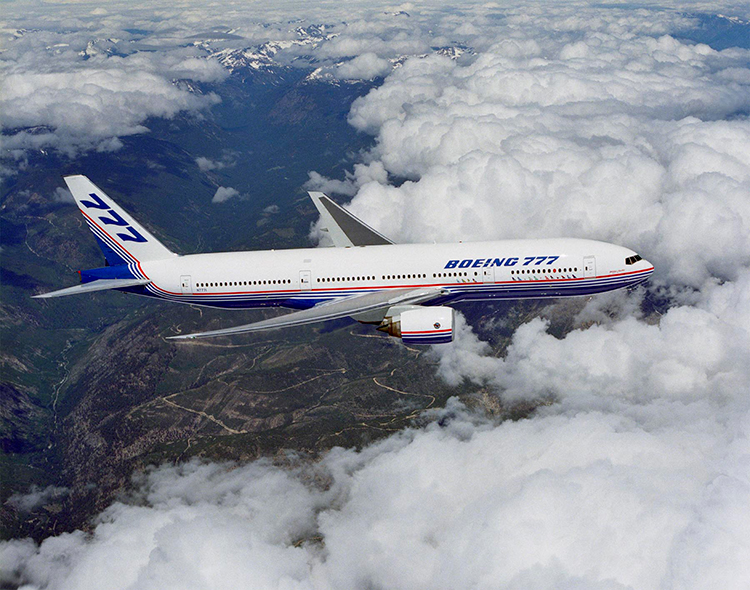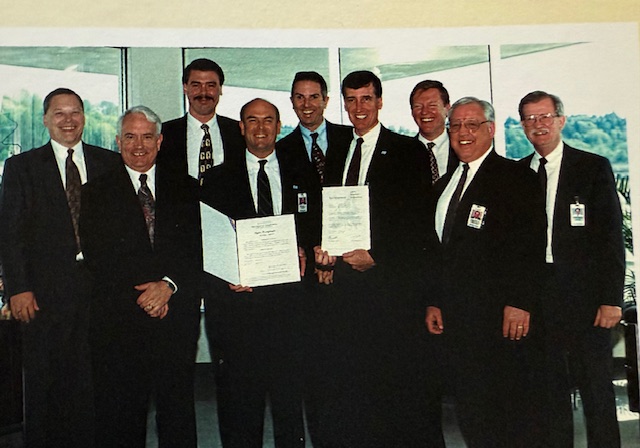Amy Sprague
July 21, 2025

Charlie Higgins
From wind shear to post-9/11 security, Charles "Charlie" Higgins, a 1971 graduate of our department, has spent his career tackling aviation's most pressing challenges. Throughout his distinguished tenure at Boeing Commercial Airplanes, Higgins led collaborative efforts that revolutionized safety standards across the entire aviation industry and saved countless lives around the world.
His impact is perhaps best understood through the voices of longtime colleagues who witnessed his leadership firsthand—fellow aerospace engineers and industry leaders who worked alongside him to transform aviation safety and security.
"Charlie's extraordinary leadership has produced worldwide benefits for aviation, engineering, safety and security," says Alan Mulally, Higgins’ longtime colleague and former President and CEO of both Boeing Commercial Airplanes and the Ford Motor Company. "His career-long contributions are extraordinary and provide global benefits for people, and for current and future aviation products and services."
Pioneering industry-wide wind shear safety in the 1980s

The 777's first flight in 1994 marked a new era in aircraft development. Under Charlie Higgins' leadership as Chief Project Engineer, the program established testing methodologies and certification processes that became industry standards worldwide. Photo credit: Boeing Dreamscape - K58552, CC BY 2.0.
Before Higgins took on the challenge, wind shear was a deadly phenomenon responsible for numerous aviation disasters across all airlines and aircraft types. As Boeing's technology leader in the 1980s, he spearheaded a collaborative initiative that brought together experts from across the entire aviation industry—manufacturers, airlines, and government agencies—to develop life-saving solutions that would benefit all commercial aviation.
"Evidence that new training techniques have been instrumental in avoiding hazardous wind-shear conditions," noted Congressman Norman Mineta in Congressional testimony in October 1988, specifically recognizing Higgins for his contributions to the FAA Windshear Training Aid that became standard across the industry.
These efforts earned Higgins Boeing's prestigious "President's Award for Contributions to Aviation Safety" and laid the groundwork for his collaborative approach to solving complex aviation challenges that transcended any single manufacturer.
Revolutionary advancements that transformed aircraft testing

Boeing’s Ron Ostrowski, Ron Robinson, Lars Andersen, Jeff Hawk, Greg Smith, Charlie Higgins, Alan Mulally, Tim Hickox, and Cliff Moore receiving the FAA Type Certificate for the 777. This certificate approves the design of an aircraft.
As Chief Project Engineer for the 777 in the 1990s, Higgins led groundbreaking innovations that set new standards for commercial aircraft development across the industry.
"Charlie's vision transformed how we test and certify commercial aircraft," says Chester Ekstrand, who worked closely with Higgins during his time as Boeing Vice President and Director of Flight Crew Operations. "The Systems Integration Lab he pioneered allowed us to test full airplane systems a year before assembly—something that had never been done before. This approach dramatically improved safety and reliability from day one."
This comprehensive testing approach involved over 70 laboratories testing individual components and complete airplane systems, while extensive flight tests on nine aircraft worldwide validated performance across engines from multiple manufacturers—Pratt & Whitney, General Electric, and Rolls Royce. These testing methodologies became industry best practices adopted by manufacturers worldwide.
His innovations extended to certification advancements, including the first concurrent FAA/JAA certification and groundbreaking approval for Extended Range Operations (ETOPS). While these achievements contributed to Boeing receiving the 1995 Collier Trophy for the 777 program, the certification processes Higgins developed became standard practice across the aviation industry.
Establishing proactive safety leadership across aviation
Following several high-profile aviation incidents in the late 1990s—including US Air Flight 427, TWA 800, and others affecting multiple airlines—Higgins stepped into a crucial role as Boeing's Vice President for Airplane and Aviation Safety. Rather than merely responding to accidents, he championed a proactive approach to risk management that would transform the entire industry's safety culture.
"Charlie has always been driven by his moral compass," says Lars Q. Andersen, a 1968 A&A graduate who overlapped with Higgins and former Boeing Vice President who received the department’s 2011 Distinguished Alumnus Award. "He inspires others to work toward what is right, implementing 'working together' practices that bring diverse teams toward common objectives."
This philosophy led Higgins to establish the Commercial Aviation Safety Team (CAST), bringing together the FAA, airlines, manufacturers, and pilots' associations in an unprecedented collaboration. Through Joint Safety Analysis Teams and Joint Safety Implementation Teams, CAST achieved an 83% reduction in fatal airline accident risk across all carriers—a transformation that earned the 2008 Collier Trophy and established industry-wide safety frameworks that continue to protect passengers today.
"Charlie showed us all what's possible when we combine technical excellence with collaborative leadership. His approach to 'working together' created solutions that no organization could have developed alone."
Transforming aviation security for the entire industry
When the September 11 attacks fundamentally changed aviation security requirements, Higgins was at the forefront of industry-wide response efforts as Vice President for Aviation Safety and Security.
"Charlie's leadership during that critical time was exemplary," notes Ronald H. Robinson, another 1968 A&A alumnus and retired Boeing Director who worked alongside Higgins for many years. "He coordinated worldwide enhancements to flight deck security that protected travelers while maintaining operational efficiency. His ability to bring together government agencies, airlines, and manufacturers under extreme time pressure demonstrated his exceptional collaborative skills."
Beyond immediate security upgrades implemented across all aircraft types, Higgins established lasting frameworks for aviation security risk management that benefit the entire industry. He led classified programs including the Risk Management Working Group and the US Commercial Aviation Partnership, developing methodologies for evaluating potential security measures that continue to protect travelers across all airlines today.
A legacy of boundless impact across aviation
Throughout his distinguished career, Higgins consistently demonstrated the power of bringing together diverse stakeholders from across the aviation ecosystem to solve complex challenges. His collaborative leadership style enabled him to work effectively with people from all backgrounds and nationalities, uniting thousands from airlines, manufacturers, and regulatory agencies around common objectives for improvement.
Today, his legacy lives on in the safer, more secure aviation industry we all benefit from. The innovations he championed—from wind shear detection to enhanced flight deck security—protect millions of travelers daily and have become standard practice across commercial aviation worldwide.
Higgins continues to inspire the next generation of aerospace engineers, recently sharing his experiences and insights as a guest speaker for the department's undergraduate seminar. His achievements provide a powerful example of how engineers can work together across organizational boundaries to create significant impacts that enhance quality of life around the world.
As Mulally notes, "Charlie showed us all what's possible when we combine technical excellence with collaborative leadership. His approach to 'working together' created solutions that no organization could have developed alone."